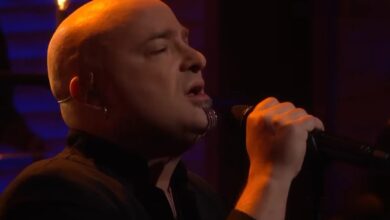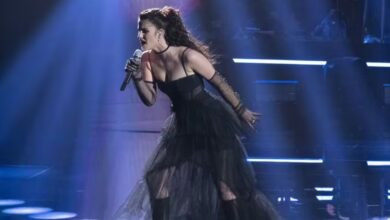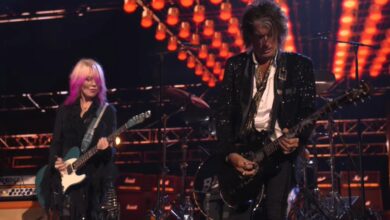A Haunting and Powerful Reinvention of “The Sound of Silence” That Captures Timeless Emotion and Resonates With a New Generation
Dan Vasc’s interpretation of “The Sound of Silence” channels the darker, cinematic spirit popularized in the 2010s while carving out a distinct identity of its own. Rather than recreating the austere folk minimalism of Simon & Garfunkel, he leans into a brooding modern aesthetic—slow-burn dynamics, dramatic crescendos, and a production sheen that makes the song feel immense without losing its intimate core of solitude, alienation, and hard-won clarity.
Vasc first introduced the song within his ongoing Cover-Up series, a project dedicated to reimagining well-known material with muscular arrangements and a lead vocal approach that rewards patience. His earliest studio take arrived in the late 2010s and quickly stood out as one of his most requested performances, largely because it balanced reverence for the source with the emotional volatility people expect from contemporary heavy ballads.
From the opening seconds, he resists the temptation to over-ornament. The arrangement breathes. Sparse piano or clean guitar figures set the tone, a low drone beds the harmony, and the vocal enters barely above a whisper. That restraint is strategic; by holding back at the start, he earns the right to unleash intensity later, feeding the song’s narrative of waking from numbness into awareness.
What many listeners latch onto is the timbral contrast in his voice. He favors a saturated, chest-dominant resonance with carefully controlled grit, contrasting the smoother legato lines associated with the original. The baritone depth gives familiar lyrics a different gravitational center, and when he lifts into mixed resonance on the later verses, the jump in energy lands like a confession turning into a declaration.
Production choices heighten the drama without smothering it. The vocal is engineered to sit forward in the soundstage, supported by a halo of room ambience that expands with each section. Instrumental textures thicken in stages—subtle pads, weightier low end, and finally full-band impact—so the mix widens as the lyrics move from private introspection to communal release. The sound remains polished but never sterile.
Emotionally, the reading reframes silence as something lived-in rather than abstract. Phrases like “people talking without speaking” are delivered with measured bitterness, then with tender exhaustion, then with resolve. That arc is the point: the cover treats each verse as a step on a staircase from isolation to testimony. By the time the final refrain arrives, the quiet plea has become an unignorable statement.
In the following years he revisited the piece, updating the performance with crisper engineering and small arrangement tweaks that tightened the low end and clarified the build. Those revisions did not change the soul of the interpretation; they refined it. The pacing stayed deliberate, the crescendos remained earned, and the vocal storytelling grew more confident, making the later version feel like a seasoned reiteration rather than a remake.
Audience response has been consistently strong across platforms where cover culture thrives. Reaction channels singled out the discipline of the slow build, and comments frequently focused on the goosebump moment when the arrangement finally blooms. Listeners accustomed to the bombast of heavier music appreciated the patience on display, while fans of the original valued the clear enunciation and respect for the lyric.
Within Vasc’s broader catalogue, “The Sound of Silence” serves as a calling card for his approach to legacy material. He often selects songs that carry cultural memory, then rewrites their sonic grammar in a way that makes sense for modern ears—bigger low frequencies, glassier highs, and a center-stage vocal. This track exemplifies that philosophy, bridging eras without feeling like pastiche or parody.
Musically, the cover thrives on dynamic architecture. Verse one is nearly breathless. Verse two trades fragility for shape. By verse three, the band finally leans in, and the rhythmic heartbeat becomes undeniable. The last refrain is the release the entire arrangement has been promising, but it avoids sheer volume for volume’s sake; articulation remains clean, and consonants still bite through the wall of sound.
Compared with Disturbed’s landmark reading, Vasc’s version carries a related emotional palette but speaks with a different accent. Where Disturbed often centers on a piano-anchored melancholy that swells into orchestral grandeur, this take leans more into guitar-and-drum weight, using modern rock language to achieve similar catharsis. The kinship is obvious, but the choices are his, and the voice at the mic makes the story new.
The lyric’s central tension—connection thwarted by noise and numbness—benefits from the cover’s cinematic pacing. Each recurrence of the title line arrives with deeper color, as if the singer is learning how to name the quiet more truthfully. That interpretive growth mirrors the arrangement’s swelling strength, turning a familiar melody into a narrative of gathering conviction rather than simple nostalgia.
Technically, the performance demands careful breath management and vowel shaping to keep the lower register resonant without mud. The mix supports that by carving space around the fundamental frequencies of the voice, letting the baritone warmth bloom while guitars and pads occupy adjacent bands. That attention to spectrum is part of why the final chorus feels expansive instead of crowded.
On stage, the piece translates effectively because its architecture is clear and resilient. Minimalist intros work in small rooms; the thunderous final section fills bigger spaces without arrangement changes. The song’s rhetorical power—quiet testimony turning public—helps performers and audiences meet in the same emotional place, which is why this cover often lands as a communal moment rather than a solitary showcase.
Culturally, this rendition participates in a lineage of re-voicing standards for new generations. “The Sound of Silence” has survived because artists keep finding honest ways to speak through it. Vasc’s version doesn’t erase earlier readings; it converses with them. Listeners who come in through heavier music discover the song’s core message, and long-time fans hear a familiar truth dressed in contemporary sound.
What endures, ultimately, is the balance of craft and feeling. The arrangement is disciplined, the production intentional, and the vocal charged with lived emotion. That combination turns a beloved classic into something immediate again, reminding audiences why the words matter and why the silence between them can still tremble. In that sense, this cover is less about novelty than renewal—and that is why it continues to resonate.





